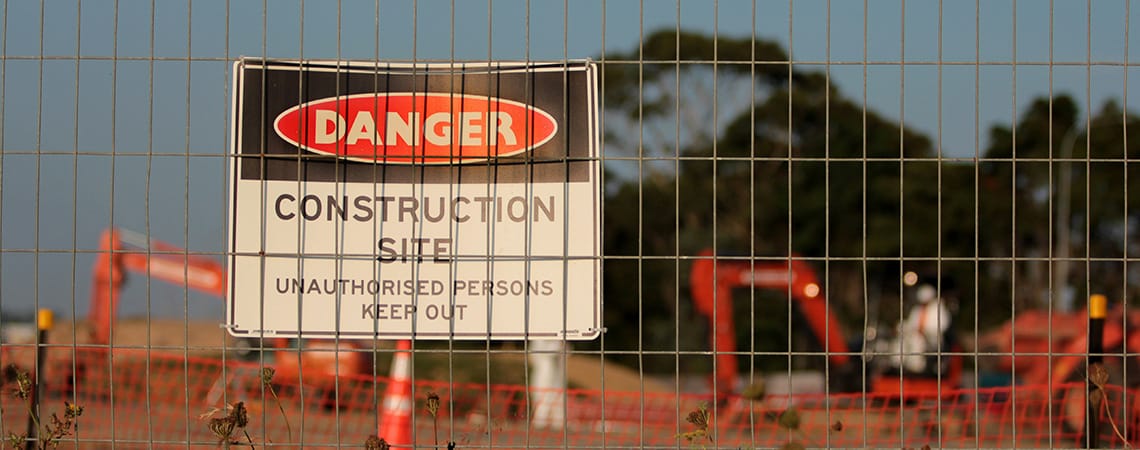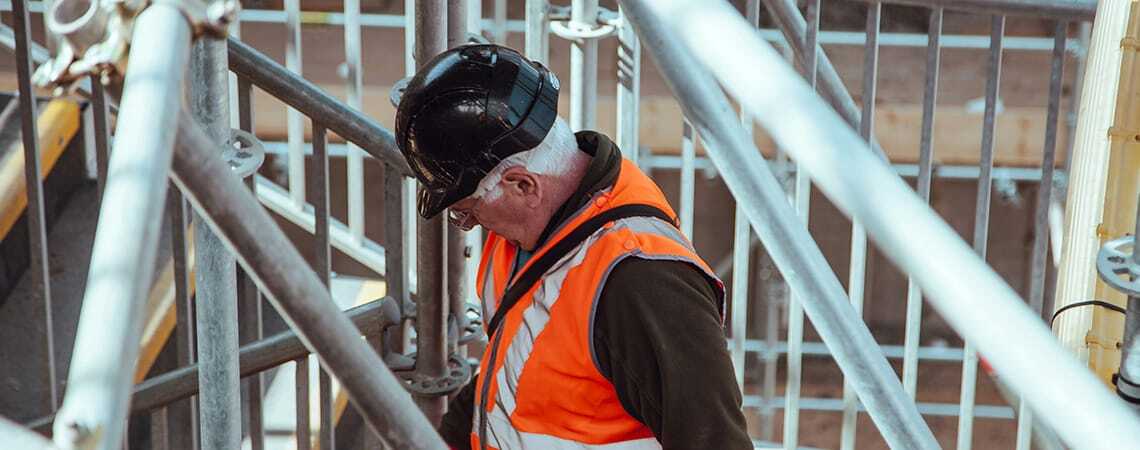Permit to work (PTW) systems, also known as Control of Work Systems, are an ideal way to ensure that work is managed correctly and performed safely and efficiently.
There are many types of system from paper and spreadsheets at one end to an electronic permit to work system at the other.
A effective system requires a combination of the right functionality and enforcement of the right process for using it. Without both of these, you are likely to run into difficulties.
Here are some of the problems that we have encountered with unsuitable permit to work systems compared to the benefits of electronic systems:
Problems With Inadequate PTW Systems
Contractors are not qualified to do the work or their certification has expired
A lack of qualifications could result in unsafe working practices, potentially causing accidents. Having an out-of-date certification may lead to exposure to legal action if an incident occurs and an investigation reveals that the contractor’s paperwork was not up to date.
Contractors are not aware of other work happening on-site when they arrive
Other work being performed may affect the work planned for the contractors – particularly for tasks in close proximity to each other. This could result in having to cancel a job, with associated costs, or in the worst case, a safety issue arising because of lack of information and awareness of what else is happening in the same space.

Method statements not being followed by contractors or not available to them
Method statements provide a clear process for safe task completion. If the correct process is not followed, safety issues may arise, or the job may not be completed to the required standards. The company may also run the risk of commercial or legal exposure should an incident occur.
Any required Isolations are not in place prior to work starting
The most direct consequence of inadequate isolation is the heightened risk of accidents, including electrocutions, explosions, and chemical exposures. These incidents can result in severe injuries or fatalities, highlighting the critical importance of proper isolation practices.
Gas Tests are not performed for high-risk work
One of the primary risks associated with inadequate gas testing is the potential for explosions or fires. Flammable gases, if not detected and managed properly, can reach concentrations that are within their explosive or flammable range, leading to catastrophic incidents.
There is also the risk that workers may unknowingly be exposed to toxic gases, which can have immediate or long-term health effects. Chronic exposure to certain gases can lead to serious health issues, including respiratory problems, neurological damage, and even death.
Gas testing is crucial for monitoring oxygen levels in the work environment. Oxygen-deficient atmospheres can lead to asphyxiation, while oxygen-enriched environments increase the risk of fires and explosions. Improper gas testing can fail to identify these hazardous conditions, putting workers at risk.
Inadequate or missing fire watch
Without a vigilant fire watch, early signs of fire or conditions conducive to fire may go unnoticed until it's too late to prevent or control the fire effectively.
Human error such as lost records and incorrect data entry
This probably needs no further explanation – there are literally an infinite number of ways that human error can cause chaos!
At the risk of stating the obvious, any one of these issues can, if unmanaged, have tragic results. As Health and Safety Professionals we know that often it’s the simple things that go wrong, and I am betting that many of us have direct experience of at least one of these issues in a live environment.

Problems With Paper-Based PTW Systems
Lack Of Flexibility
Paper-based systems are a perfect breeding ground for problems – they require a huge amount of manual input, there’s the opportunity for error at every stage, they cannot be viewed and managed remotely, and they often lack the flexibility to accommodate different types of task, leading to ad-hoc amendments to forms.
Too Many Options
If a permit involves multiple activities – e.g. isolations, hot work etc, specific questions must be addressed to ensure that appropriate safety measures and competences are in place. However, in many cases a permit will only need to focus on a subset of these activities. Paper permit forms must by default contain all possible activities, resulting in a cumbersome and potentially confusing form. In an electronic system permit questions can dynamically change based on simple yes/no answers e.g. if hot work is selected then a set of questions related to hot work is displayed.
Time Delays
Because paper forms must be physically moved around for approval/handback etc it is also possible that tasks are delayed or, worse, commenced without proper authority due to time delays in processing permits.
Hidden Costs
Although a paper-based system can initially appear to be a low-cost option, handling paper incurs a small cost at every stage, principally in the time it takes to physically move the document around, but there is also a less visible cost in the potential errors and omissions which can result from reliance on a paper-based system.
Hard To Share Information
There is also an overhead associated with the printing and storage of permits. The fact that paper forms can only exist in one place at a time means that it is difficult to share information, particularly as jobs are happening since the permit form is likely to be at the job location – this makes it difficult to keep an accurate record of any changes that may occur after the permit has been opened – e.g. changes to the associated risks. Capturing photographic evidence of work done or other job-specific information is difficult or impossible using a paper-based system, and given the prevalence of smartphone cameras an electronic PTW system is a much more convenient solution for the easy sharing of images.
Contractor management
Since many companies use contractors it is crucial to ensure that they are managed correctly while on site. Do they have the correct competencies and insurance documents? Do they have access to any site-specific data which they need to perform their tasks? Has their performance been assessed on other tasks? An effective contractor management module should work seamlessly with the PTW system to ensure that the best use is made of contractors.
An Electronic Permit To Work System Avoids Common Problems
An electronic permit-to-work system should help to address many of the issues described here.
Total Visibility
Central storage of permits allows all relevant stakeholders to have immediate access to data, and controls can be imposed to prevent a permit being issued until all required data has been input and validated.
As a management aid, the ability to quickly view permits at a specific location should help to identify potential SIMOP issues.

Risk Assessment Updates
Seamless integration with risk assessment processes should also ensure that permits can be raised as part of the RA process, or alternatively, Risk assessments can be created as part of the permit issue process and any changes as the job progresses can be easily updated and accessed by authorised staff.
Auditability is also critical in any PTW system. An electronic system will normally store a record of all changes, allowing quick and easy analysis during external audits or investigations.
Enforcement of PTW Processes
Enforcement of Permit-to-Work processes is crucial for maintaining safety and compliance in hazardous work environments. PTW systems are designed to ensure that high-risk work is conducted safely by establishing a formal authorisation process. Effective enforcement involves several key strategies which are made easier by using an electronic system:
Clear Policies and Procedures
Establish clear, written policies and procedures for the PTW process, detailing the steps required to obtain a permit, the responsibilities of all parties involved, and the conditions under which work can proceed. This documentation should be easily accessible to all employees and should be properly managed in line with company QHSE policy.
Training and Awareness
Provide comprehensive training for all employees on the PTW system, emphasizing the importance of compliance for safety. Training should cover how to complete permits accurately, the risks associated with the work, and the controls required to mitigate these risks.
Designated Authority and Responsibilities
Assign specific roles and responsibilities within the PTW process, including who is authorised to issue, approve and revoke permits, who can perform the work, and who is responsible for monitoring compliance. Ensure that individuals in these roles are competent and understand their responsibilities.
Regular Audits and Inspections
Conduct regular audits and inspections of PTW practices to ensure compliance with policies and procedures. Audits should check for proper permit completion, adherence to permit conditions, and effective use of controls to mitigate risks. As we discussed earlier, electronic PTW systems will often include an audit trail so that all changes made to a permit can be viewed.
Enforcement Actions
We never want to have to discipline staff for failing to follow a process, and it’s our responsibility to ensure that our people are well-trained with access to the systems and processes they need to do their jobs safely and well. Regular spot checks, employee feedback sessions and one-to-one training may help to reinforce what is ultimately one of the most important processes in any high-risk business.
Our electronic Permit to Work software is available as a cloud-based solution which allows access from anywhere with internet access.
